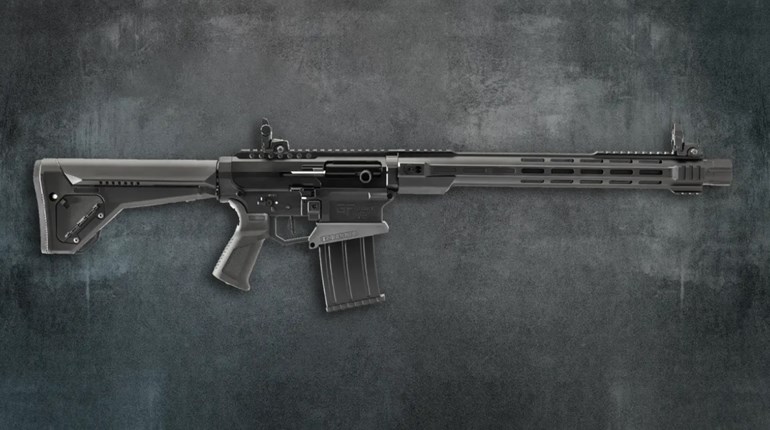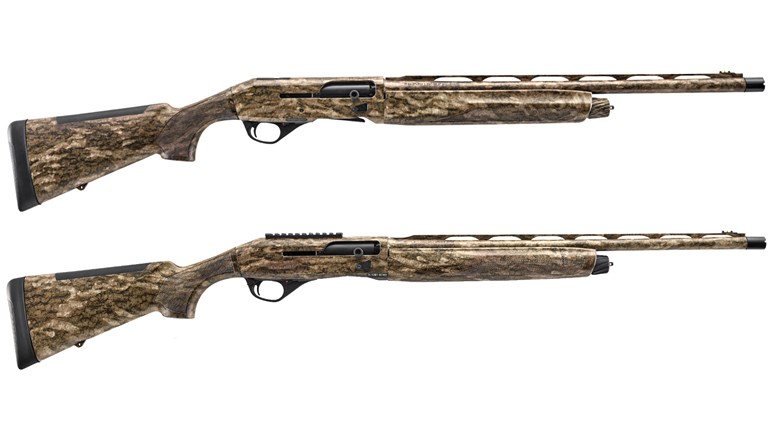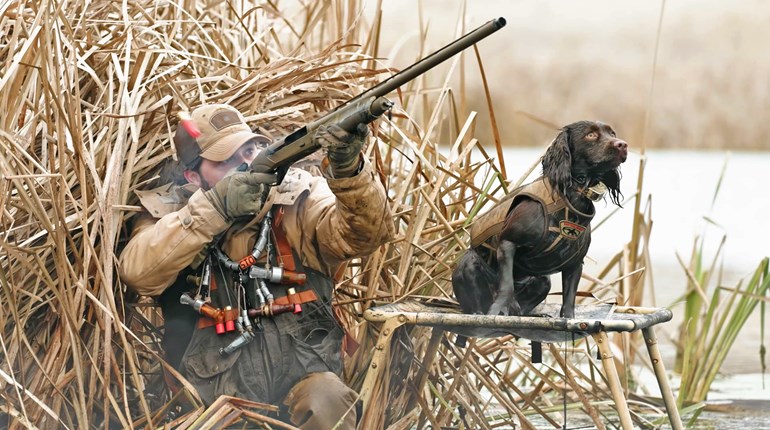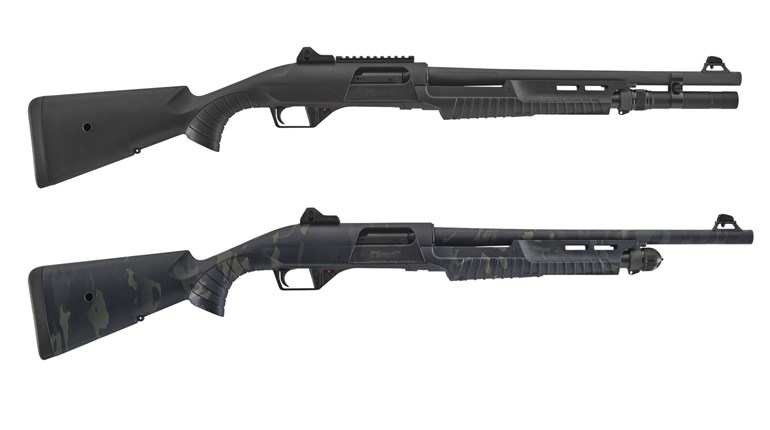
Recoil is a cold, hard and oftentimes painful reality that accompanies discharging a firearm. Proportionate to the number of rounds expended and recoil generated by the firearm is the total abuse the body endures. Few shooters can relate to this better than those who take to the dove fields in the areas surrounding Cordoba, Argentina, where shotshells consumed per day are tallied by the case rather than the box.
In 2005 Benelli introduced the aptly named Cordoba, an inertia-recoil-operated, semi-automatic 12-gauge shotgun with many recoil-mitigating features designed specifically for high-volume shoots such as those found in South America. Since its inception, the Cordoba has been so well received that this year a smaller, even softer-shooting companion in 20 gauge was catalogued.
Mimicking the original Cordoba, the 20-gauge version is operated by Benelli's Inertia Driven System, which utilizes a portion of recoil energy rather than bleeding off propellant gas to function. Because no gas is diverted for operation, both it and residue are contained within the barrel, making cleanup simple and quick.
The bolt assembly consists of three primary parts—the bolt body, the inertia spring and the rotating locking head—which lends to its simple, reliable nature and light weight. Housing the assembly in a two-piece, black-anodized aluminum receiver, rather than steel, further reduces the semi-automatic's heft to just 6 pounds, 5 ounces.
Benelli's 20-gauge Cordoba wears the thoughtfully designed ComforTech synthetic stock, which hosts a number of innovations aimed at recoil reduction. Embedded in the buttstock are a series of 12 synthetic recoil-absorbing chevrons that run from the wrist to the heel along the path of the recoil impulse, forming a barrier that absorbs and disperses recoil energy. These slightly increase in size through the progression. Capping the buttstock is the pliable ComforTech TechnoGel recoil pad, ergonomically shaped to fit the contours of the shoulder pocket and intended to distribute recoil over a wider area than standard recoil pads. The ComforTech recoil pad measures 1 3/4 inches wide by 5 3/8 inches tall and is left or right specific. Three pad sizes are available to tailor the length of pull: standard, 14 3/8 inches; medium, 14 inches; and thin, 13 1/2 inches. Besides helping to better fit an adult shooter, this versatility allows the gun to grow with a young shotgunner. The TechnoGel cheekpiece that resides at the comb is offered in three heights to improve fit: standard, raised and extra-high.
Adjustments in cast and drop can be made using the supplied shim kit. The wrist of the 20-gauge Cordoba has slight palm swell and a dimpled checkering pattern called AirTouch, which aids purchase in wet conditions. Further helping grip is the weather-resistant GripTight over-coating, a tacky feeling treatment covering the synthetic stock. The fore-end is similarly treated. Finger grooves on the top of both sides of the fore-end allows the hand to better envelop the fore-end. Circular cuts in the tubular magazine combine with an innovative clear polymer viewing window running along the underside of the fore-end to reveal the number of rounds remaining. For those who prefer a sling, the buttstock has an integral sling-swivel stud. A second stud is located on the magazine tube cap.
The Cordoba's 28-inch hammer-forged barrel is overbored to .622 inch and has lengthened forcing cones. One part of Benelli's Crio System, the barrel is cryogenically frozen to –300 degrees Fahrenheit, a treatment that reportedly relieves stresses caused by the hammer-forging process and results in a more even-grained, slicker surface. Combined with the five extra-long, knurl-ended Crio Chokes, which also receive the same treatment, the system is said to improve patterns up to 13.2 percent. Just to the rear of the choke tube are two sets of ports—18 on either side of the tapered, stepped rib—to reduce muzzle flip and recoil for faster follow-up shots. A high-visibility, fiber-optic sight is located on the rib 1 1/2 inches from the muzzle.
I have yet to expend several thousand shotshells in a week's time, like those excursions south of the border, but I do shoot a lot of sporting clays and hand-thrown clay targets. The latter, a challenge nonetheless, was exactly how I tested the Benelli 20-gauge Cordoba. Two consecutive days with three to four hours of nearly nonstop shooting each and no cleaning was a true test of the gun's capability. Accompanying me on the outings were two friends, both of whom brought 12 gauges—one a pump, the other a semi-automatic—for comparison purposes. After trying the Cordoba 20-gauge, it wasn't that long before both handed off their beloved 12-gauge guns to me for another round with the Benelli. Nearing the end of the first day of shooting, one of them asked for the retail price of the 20-gauge Cordoba, already contemplating a purchase. That's saying a lot.
The Cordoba 20-gauge functioned flawlessly, regardless of what it was fed throughout my testing. Both 2 3/4-inch target loads and 3-inch magnums cycled reliably. As for recoil, I cannot give an exact percentage as to overall reduction, but I can report it was significant. Three-inch turkey and waterfowl loads approximated the feel of light 12-gauge target shells, and 2 3/4-inch field loads felt more like 28 gauges or .410s. What recoil was there was anything but painful; instead, it was more like a gentle nudge. Clearly there was no hyperbole concerning recoil attenuation.
Although the 20-gauge Cordoba was designed for high-volume dove shoots, I cannot help but think how nice this shotgun would be toting around the mountainside in pursuit of grouse or turkey, both of which it would easily handle when using the right loads. For those who would want to use it for waterfowl, there are situation-specific—decoying and pass shooting—choke tubes available from Benelli. Anywhere one has to walk great distances to hunt, the 20-gauge Cordoba is an obvious choice.
The shotgunner who burns through ammo like there is no tomorrow, whether after game birds or clay targets, would be hard-pressed to find a better shotgun to do it with. Even the hunter who only shoots a box or two every now then will benefit from the soft-recoiling Cordoba 20 gauge. In fact, anyone who doesn't enjoy recoil will appreciate the gun. I don't expect to be heading to South America anytime soon, but with this gun's performance and light weight, one will surely accompany me this spring when I take on Virginia's gobblers. Toms beware!




































